Motorola Droid Bionic Review - Dual Core with 4G LTE
by Brian Klug on October 11, 2011 1:55 AM EST- Posted in
- Smartphones
- LTE
- Motorola
- OMAP 4
- Mobile
- motorola droid bionic
It is something of an understatement to start out by mentioning that the Motorola Droid Bionic was easily this summer’s most anticipated smartphone. The story of the Bionic started at CES, where it immediately attracted attention thanks to its combination of 4G LTE connectivity and a Tegra 2 SoC. I remember seeing the Bionic on a table on the last bleary-eyed day of CES, among its other 4G LTE brethren as shown below.
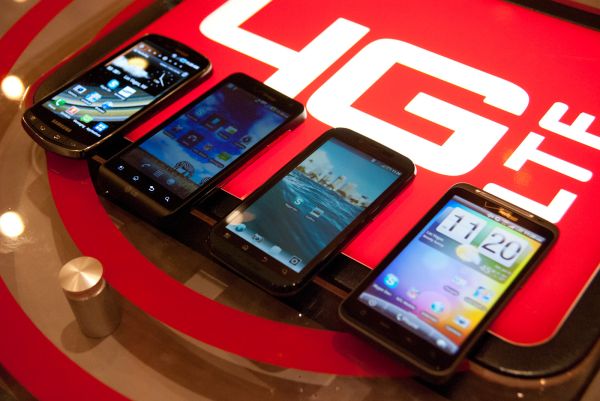
Left to Right: Droid Charge, LG Revolution, Motorola Droid Bionic (old), HTC Thunderbolt
I don’t remember much about that Bionic, other than that it was the only one among the four that I didn’t get a chance to grab photos of loading the AnandTech homepage or Dailytech, and that reps were guarded about letting me touch it. Rumor had it that the Thunderbolt would come first, and then down the row of devices. Eerily, other than the Bionic, the devices launched in that order.
That Bionic doesn’t exist anymore, instead the phone that launched in its stead is codename Targa, which was further down the roadmap and no doubt accelerated to take the original Bionic’s place. Until now, 4G LTE and dual core SoCs have been mutually exclusive, and the result is performance now gated by the SoC instead of the last mile of air between you and a base station.
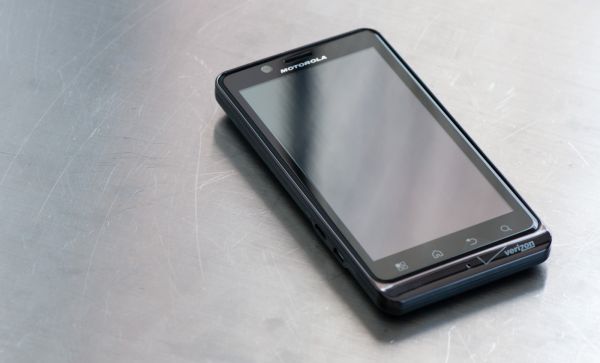
The new Motorola Droid Bionic (codename Targa)
Finally with the Bionic things change, and we have a smartphone that combines a dual core SoC with the fastest air interface around, 4G LTE. It’s been a long and arduous wait for the Bionic, but it’s finally here. The only lingering question is whether the wait has been worth it.
It’s always easiest to start with aesthetics, and here the Bionic shows an interesting combination of design language borrowed from the Droid X/X2 and the latest QWERTY keyboard packing Droid 3. I think that actually does a good job summing up what the Bionic really is - it’s a combination of the X/X2 form factor and display, and the SoC plus nu-Motorola design language of the Droid 3. If you take a step back and squint at it, I think these are totally reasonable conclusions to make.
The Bionic’s front side is a single piece of gorilla glass with tapered edges, ringed in relatively typical Motorola chrome. The lip where display meets the edge chrome is something that has drawn a lot of attention for being a dust magnet, but thus far I haven’t seen inordinate dust or lint collection in that crack. It’s nothing that a microfiber cloth can’t take care of, and honestly isn’t as big of an issue as dust collection in virtually every smartphone earpiece.
Up at the very top is the VGA front facing camera, earpiece, proximity and ambient light sensor, and finally notification LED. I know the notification LED is a must have for some smartphone shoppers, so rest assured it’s here and does work. It appears to have two colors - green and red, which blink for alerts and charging status, respectively.
At the bottom are the same style capacitive buttons as we’ve seen on other Motorola phones. I guess it’s worth mentioning that this isn’t something that changes much anymore - each OEM seems to have settled on at least some common pattern and is keeping it that way. The buttons are nicely backlit, but the white point seems a tad warmer than most. Right in the center of the bottom chrome is the primary microphone.
Left side is home to the microUSB and microHDMI ports, which are in the bottom quarter just like so many other Motorola devices. They jut out normal to the side and don’t follow the curve of the phone along its side, no doubt so it can mate up with the laptop dock, which unfortunately we don’t have.
If you squint and look at the phone from this angle, it’s readily apparent just how much inspiration the Bionic draws from the Droid X/X2 line of devices. They both have a thicker top region that tapers to a thin point at the bottom, and this iconic port placement.
On the other side is the volume rocker, which is one piece of plastic and adequately clicky.
Topside is the headset jack, and opposite to it, the Bionic’s lock/off button. It took me a while to get used to this button placement, and the button itself isn’t very good either - it rocks back and forth, and feels loose, but gets the job done.
Directing our attention to the back side, we can see the Bionic’s 8 MP rear facing camera and LED flash, which is ringed in a large chrome package. There’s a grille to the side of this which serves no real purpose that I can tell other than decoration. Just below this is a microphone for ambient noise cancelation, and on the extreme other side of the Bionic is another microphone for stereo audio recording. That’s a grand total of three microphones on the Bionic, which is pretty par for Motorola.
The edge of the phone is given a bevel which proceeds around the entire lip. This gives it a uniquely positive in-hand feel. The battery cover is topped with a brown-grey soft touch material.
Peel that battery cover up, and you can see Bionic’s standard thin and wide battery. At the top is the unique microSD card slot, which just pushes in and is held in place by friction and the battery cover. The Bionic’s SIM slides out sideways underneath it.
You can also see some characteristic antenna traces on the backside. There’s one at the bottom for CDMA and LTE, WLAN on the right side, and another at the very top likely for diversity. More on that later though.
I find the Bionic’s industrial design to be a relatively safe design for Motorola, especially given some of the more radical things we’ve seen come out lately. It keeps the chrome chin at the bottom and absolutely does match the Droid 3, but at the same time I feel like things could be much more overstated than they are here for such a high profile device.
Packaging for the Bionic matches what I’ve seen for the other high end LTE devices, with a die-cut card stock wrapper giving a glimpse of the droid eye underneath. There’s nothing out of the ordinary here, but it bears mentioning. Inside that box is the phone, standard battery, microUSB cable, charger, and some documentation. The 16 GB class 4 microSD card is, like always, preinstalled in the phone.
| Physical Comparison | ||||||
| HTC Thunderbolt | Motorola Droid X2 | Motorola Droid 3 | Motorola Droid Bionic | |||
| Height | 122 mm (4.8") | 126.5 mm (4.98") | 123.3 mm (4.85") | 127.5 mm (5.02") | ||
| Width | 67 mm (2.63") | 65.5 mm (2.58") | 64.1 mm (2.52") | 66.9 mm (2.63") | ||
| Depth | 13.2 mm (0.52") | 9.9 - 14.4 mm (0.39"-0.57") | 12.9 mm (0.51") | 10.99 mm (0.43") | ||
| Weight | 183.3 g (6.46 oz) | 148.8 g (5.25 oz) | 184 g (6.49 oz) | 158 g (5.57 oz) | ||
| CPU | 1 GHz MSM8655 45nm Snapdragon | 1 GHz Dual Core Cortex-A9 Tegra 2 AP20H | 1 GHz Dual Core Cortex-A9 OMAP 4430 | 1 GHz Dual Core Cortex-A9 OMAP 4430 | ||
| GPU | Adreno 205 | ULP GeForce | PowerVR SGX 540 | PowerVR SGX 540 | ||
| RAM | 768 MB LPDDR2 | 512 MB LPDDR2 | 512 MB LPDDR2 | 1 GB LPDDR2 | ||
| NAND | 4 GB NAND with 32 GB microSD Class 4 preinstalled | 8 GB NAND, 8 GB microSD class 4 preinstalled | 16 GB NAND, up to 32 GB microSD | 16 GB NAND, 16 GB microSD class 4 preinstalled | ||
| Camera | 8 MP with autofocus and dual LED flash, 720p30 video recording, 1.3 MP front facing | 8 MP with AF/LED Flash, 720p30 video recording | 8 MP with AF/LED Flash, 1080p30 video recording, VGA (0.3MP) front facing | 8 MP with AF/LED Flash, 1080p30 video recording, VGA front facing | ||
| Screen | 4.3” 800 x 480 LCD-TFT | 4.3" 960 x 540 RGBW LCD | 4.0" 960 x 540 RGBW LCD | 4.3" 960 x 540 RGBW LCD | ||
| Battery | Removable 5.18 Whr | Removable 5.65 Whr | Removable 5.65 Whr | Removable 6.6 Whr | ||
I'm not quite at the point where I can do videos like Anand, complete with studio, but I've done the usual thing and put together a video review and tour of the Motorola Droid Bionic.


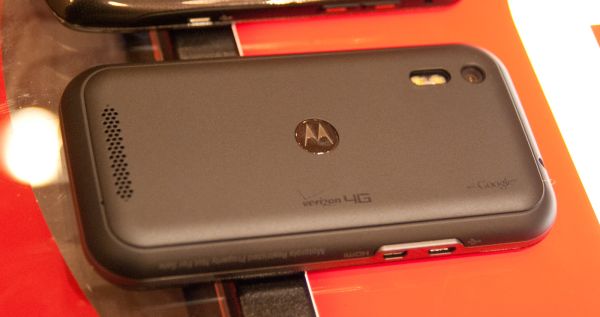
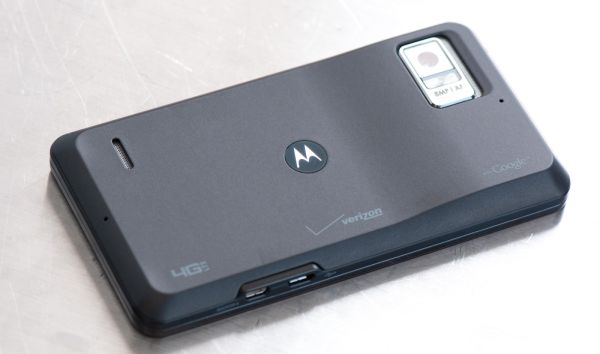
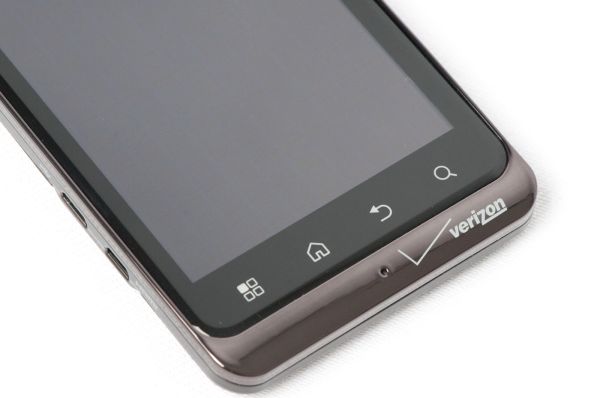
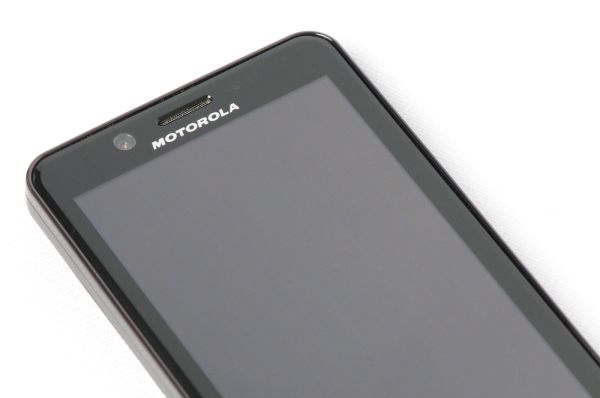
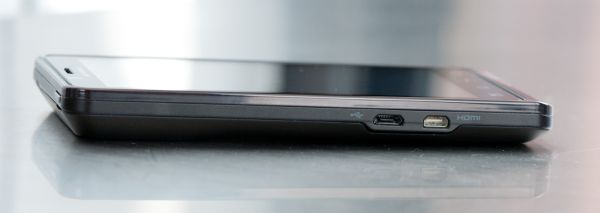
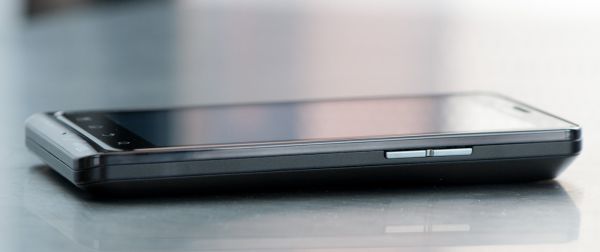
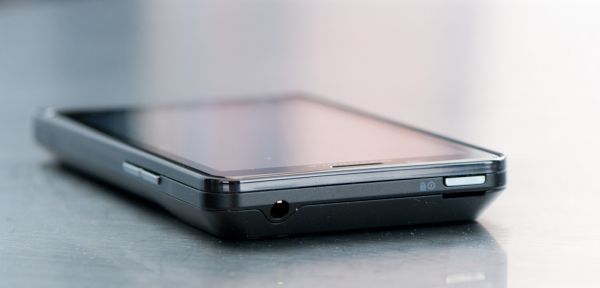
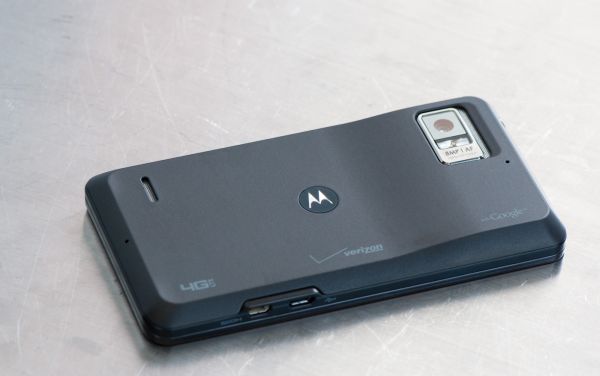
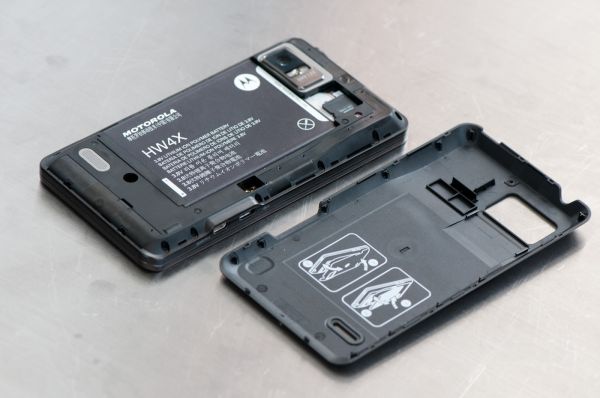
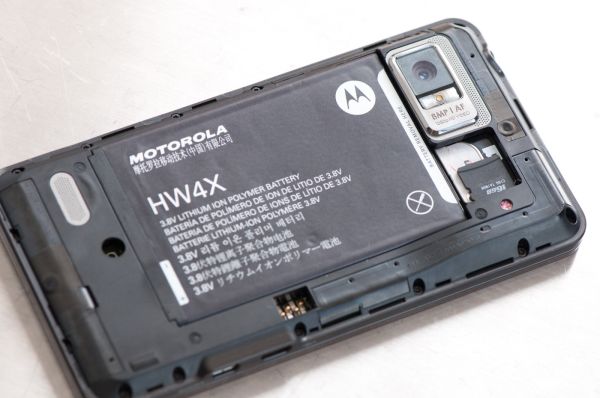
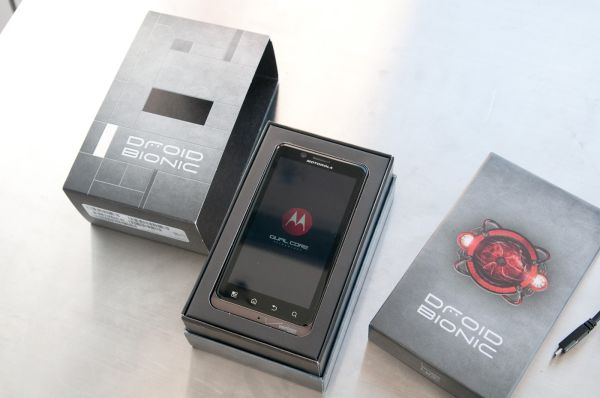














64 Comments
View All Comments
Jamezrp - Tuesday, October 11, 2011 - link
Hmm, that's not good. I'll have to get in touch with Verizon about that. Switching to airplane mode doesn't fix it, only rebooting or going in and out of sleep mode does.I have read some reviews that have claimed similar issues though. I'll keep my eyes open and report back in.
secretmanofagent - Tuesday, October 11, 2011 - link
I'd get it replaced, I'm seeing the same issues and I'm having mine replaced.toomany - Friday, October 14, 2011 - link
I had this phone for 3 weeks and ended up returning it. It was great for about a week and half then the problems began.Let me start by acknowledging that I may have had a lemon.
The very first trouble I had was when the phone did not get any data connection or send texts without any indication one day. The status bar up top showed the 4G icon so it took me until the afternoon to realize this. A reboot fixed this issue. Since then, on at least 2-3 occasions, the touch-screen would not respond or not turn on. I've had to pull the battery out twice. Then let me talk about the back button which annoyed me on several occasions, it just takes you back to whatever was on the screen before. For example, if I'm on the browser, then switch over to maps for a sec to find directions or a store, then switch back over to the browser, hitting the back button should go to the previous page. No, it'll take you back to your map (and there is no back on the orig browser). You'll eventually run into situations where this causes you to restart an app and lose progress.
Lemon or not, I'm not taking any chances when I can be stuck with it for the next 2 years. Also, DON'T BUY VERIZON AT RADIOSHACK!!! THEY GET HORRIBLE TRAINING, TAKES FOREVER, SCREWS YOU, THEN TRIES TO TELL YOU IT'S YOUR FAULT.
corymcnutt - Saturday, October 15, 2011 - link
"Other quirks include the awful shortcut-adding method, no settings in the drop-down menu, and a few more which escape me because it's late. On my model it even reads only 8GB of onboard memory, plus the 16GB card. The more I investigate, the more I think my model may be slightly defective...""Awful shortcut adding method?" This is my first Android (coming from BB) and I think it is easy to get shortcuts/apps/widgets to where you want them. Your memory is correct...that has been discussed at length...the on-board memory still gives you PLENTY of room for apps and the 16GB card will store all of you pictures, music etc..
sandtrap94 - Saturday, October 15, 2011 - link
I've had the exact same issues with my phone. I lose the data connection on occasion and only restarting the phone seems to work. Per the company it is not unheard of but it shouldn't happen frequently. If it does they want to know about it.lemmo - Tuesday, October 11, 2011 - link
Thanks for the review. You say you're still working with Francois to build out your audio testing suite. Will you be doing a review that compares the audio quality between smartphones? I can't find this info anywhere.It's a shame that audio quality is a let-down for this phone, and the Galaxy S2. I'm waiting for the reviews of the new iPhone and Nexus Prime just to see if their audio quality is better...
Brian Klug - Tuesday, October 11, 2011 - link
Yeah we're absolutely still working on a standardized testing methodology for sound - the thing to standardize here is the audio card (which we both have the same of - ASUS), a Y cable plus load headsets (testing unloaded isn't really meaningful), and the software.Unfortunately the Bionic is already so bad that really tests would just tell you all of that again. Listening to the Bionic and then to my Nexus S with voodoo sound - the difference is shocking.
-Brian
Sea Shadow - Tuesday, October 11, 2011 - link
It's late and I'm about to retire for the evening, but I thought I would take the time to log in and say thank you for a thorough review.For me Anandtech is one of the last bastions of lengthy reviews as more and more sites slip into lots of pictures and glossing over the gritty details. I enjoyed the review and especially so the details about battery chemistry and the RGBW displays.
Only thing you may want to double check is the listed order of the phones on display at CES. I understand one is left to right and the other is right to left, but the paragraph in the article seems to have the LG revolution and Samsung Charge flipped. Other than that, spot on job and thank you for a great read.
Brian Klug - Tuesday, October 11, 2011 - link
OOps, very good catch! Should be fixed momentarily! Thanks!-Brian
MGSsancho - Tuesday, October 11, 2011 - link
Does it have a locked bootloader like the Droid 2? If so it is a deal breaker for me. Other than that, all I personally look for in a review is the screen (all attributes,) Picture quality, time it takes from button depress to ability to actually take a picture, and battery life. Keep up the good reviews